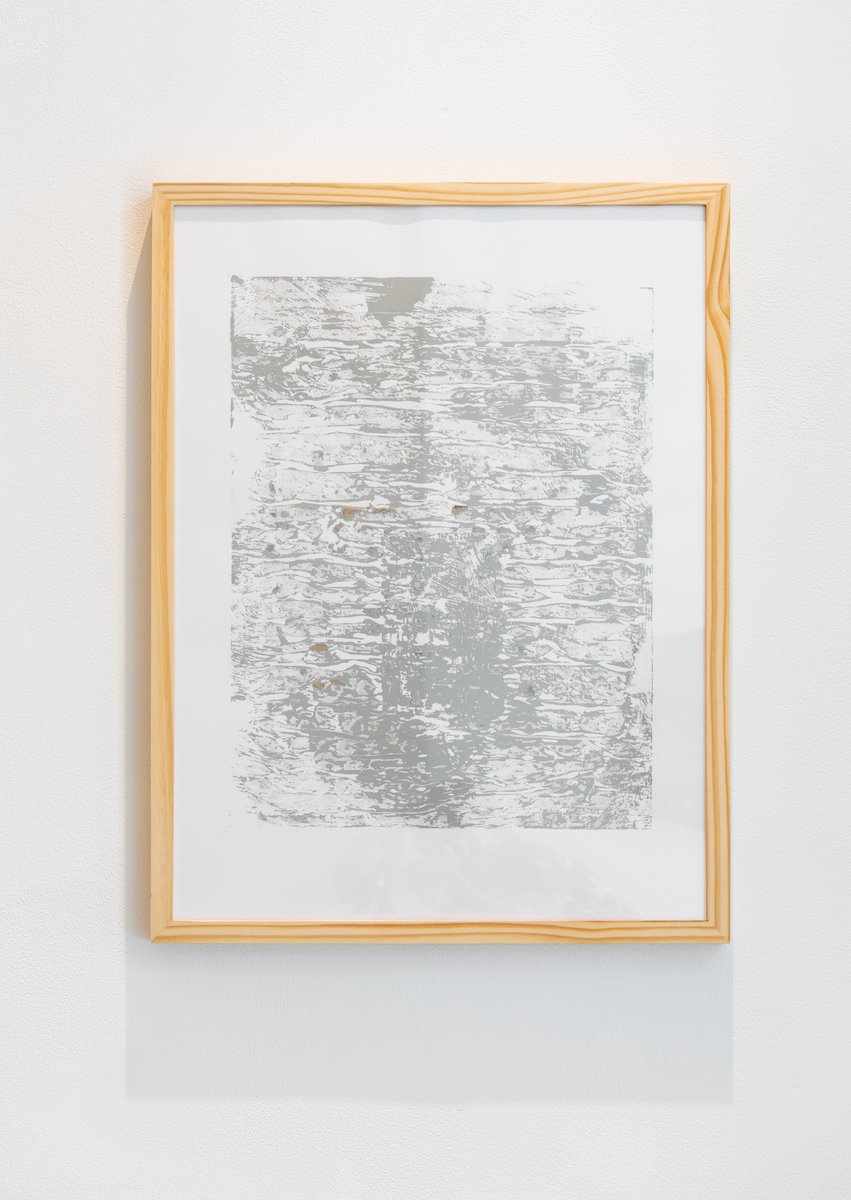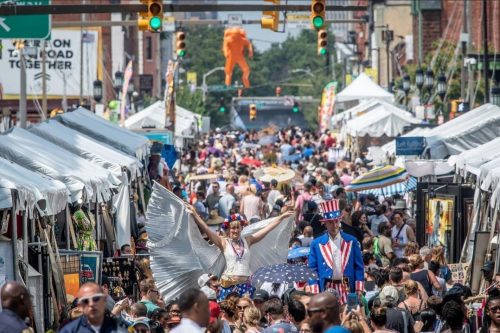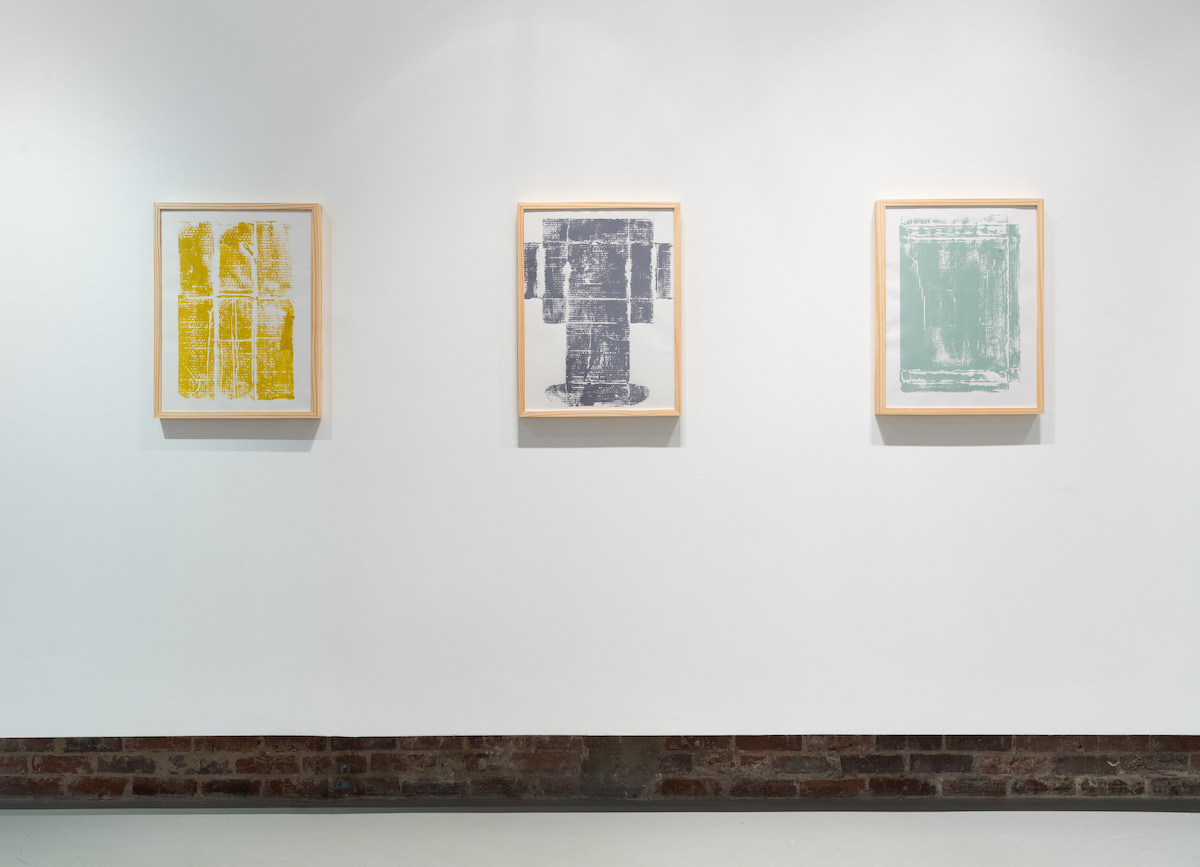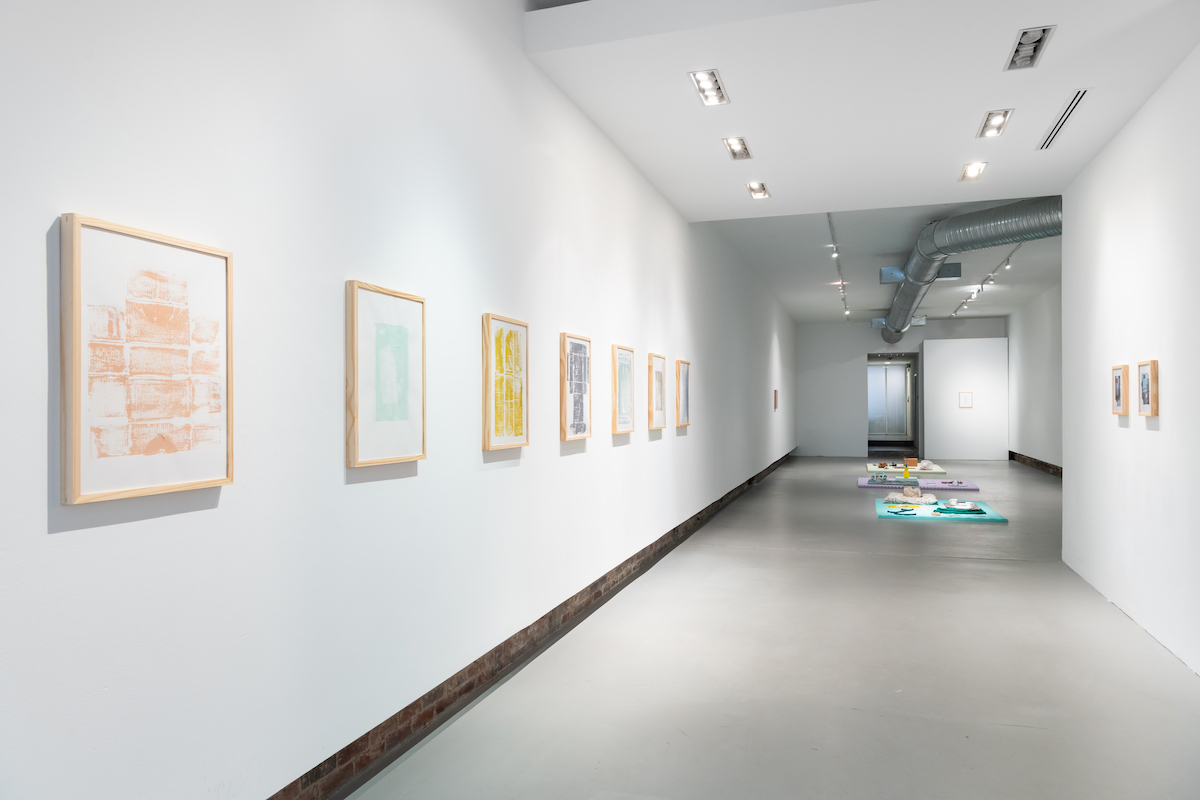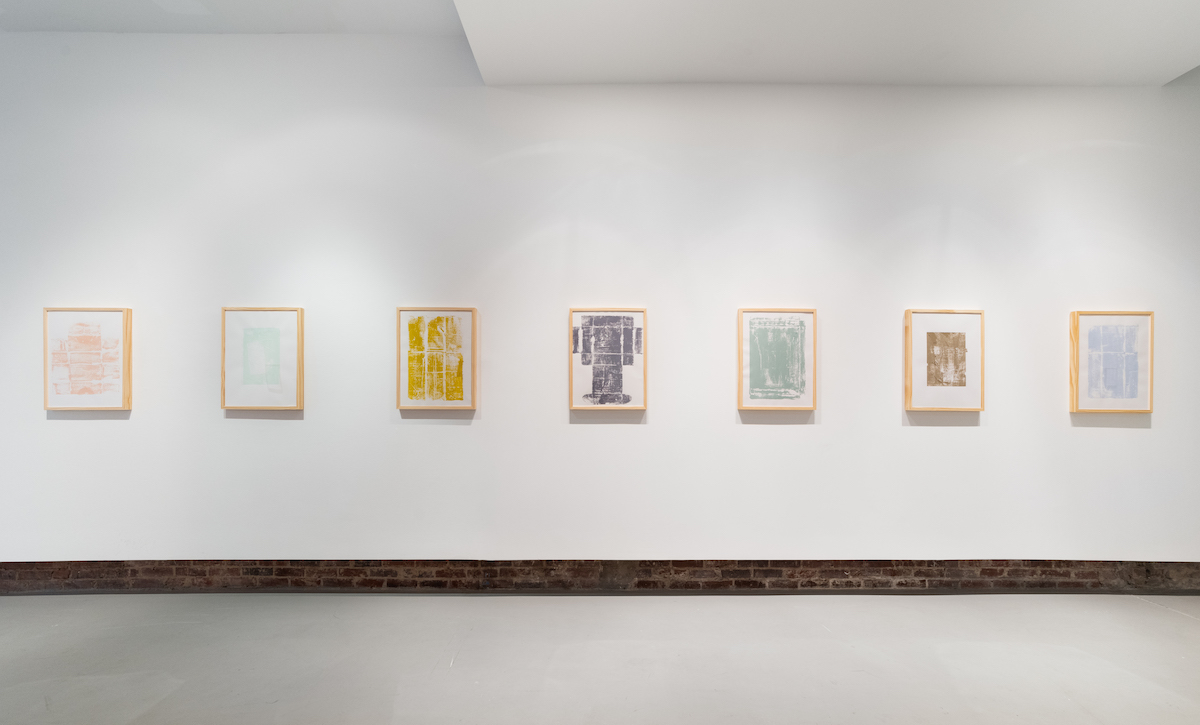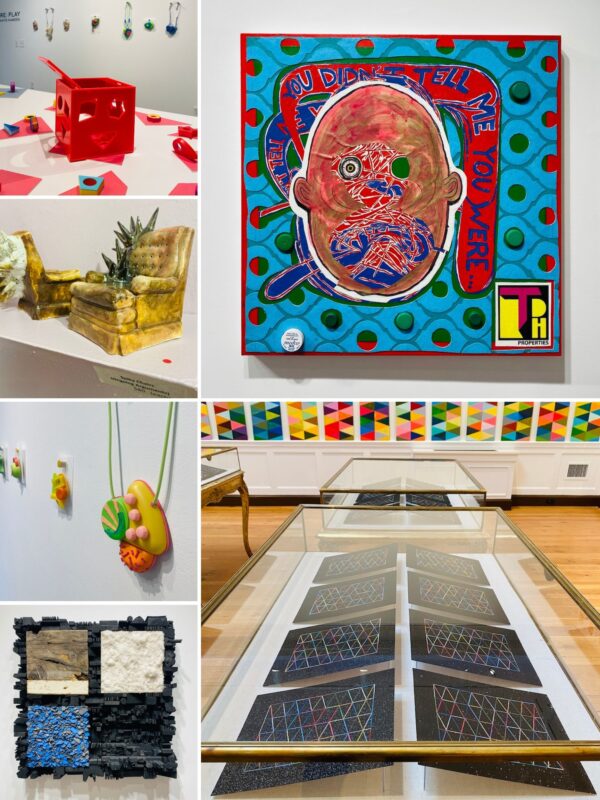This is my favorite kind of conceptual art—at once both cynical and yet also quite pretty, the muted tones and delicate forms balanced out by the simultaneously sweet and satirical online reviews. The show is certainly also textural: the raft-sculptures include pages of an open book folded into a fan, spindly branches painted a stark white, a bird’s feather all atop pastel foam molded into waves or rose-like shapes.
The monoprints have a tactile quality to them as well, the colored residue of cardboard on paper: the forgotten, throw-away thing leaving its mark. You want to take the whole show in with all of your senses—not just looking but breathing and touching, like the wrapping paper reviewer’s wish: “if only it were scented.” But all the while you’re acutely aware that Anderson is winking at you impishly. Even the titles of the monoprints—“Amazon,” “Chewy,” and “Walmart,” for example—make it evident that this is art for tricksters.
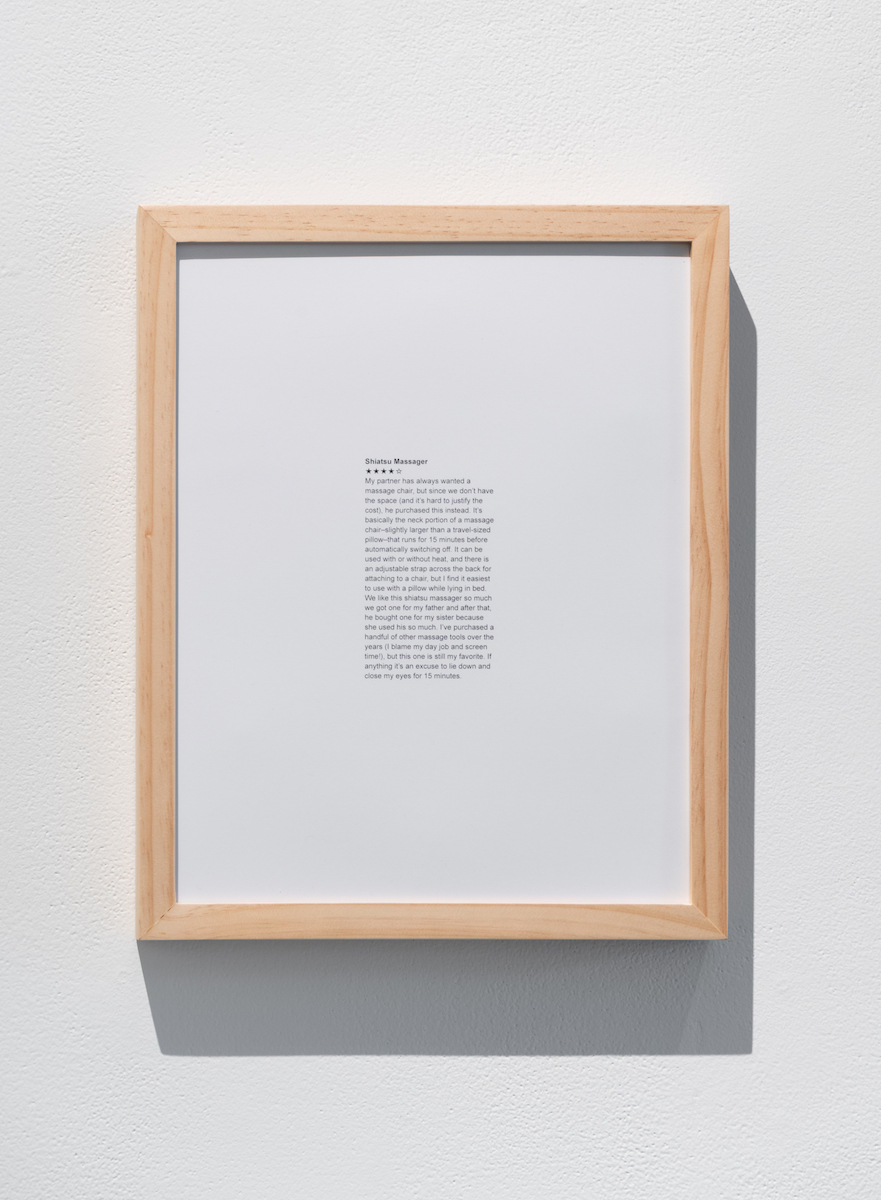
The twin themes of consumerism and memory wind their way through Anderson’s larger body of work, and her second solo show at Hamiltonian finally brings the two together, although perhaps uneasily. Almost saccharine assemblages of doilies and dried flowers sit, for example, next to a half-opened cardboard delivery box, with enough text haphazardly taped over to read simply, “Ass / Handle with Care.” The exhibition also includes two small (12 x 9-inch) digital prints of photo collages of package deliveries on doorsteps, entitled “Ordered” and “Fulfilled.” The question here is in the second title: are we really fulfilled?
In her previous solo show as part of her Hamiltonian fellowship, This is Who I Am Now, Anderson addressed online marketing head-on, the work itself an archive of every Instagram ad she viewed over the course of a week. The images, largely of household goods, amounted to what Anderson describes in her artist’s statement as “a self-portrait through the lens of targeted advertising.” These were accompanied by AI-generated poetry from ad copy and a screen recording of a promotional video about Google’s data storage methods and Anderson’s own internet searches as “a way to critique what is unknown when one is online.” In Something Worth Doing, her taunt is more subtle: she is asking the viewer to consider their emotional relationship to objects. How are we complicit in our own exploitation? What do our memories mean when coded through the filter of algorithmic marketing?
Anderson doesn’t offer easy answers to these questions. Instead, she invites us to examine our own desires and how they are mediated through capitalism’s exploitation of our very real, very somatic memories: soft foam, delicate feathering, muted tones, a photograph of the ocean, your grandmother’s teacup, a hemp bracelet.
